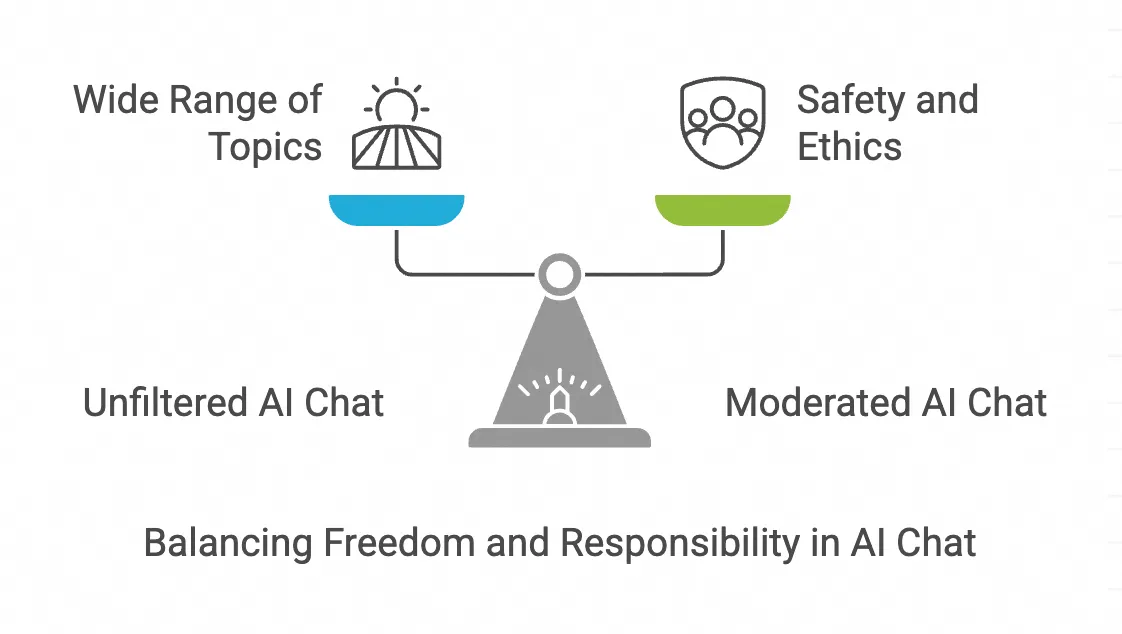The rise of artificial intelligence (AI) has transformed how humans interact with technology, particularly in conversational platforms. While most AI chatbots are designed with filters to ensure safety and compliance, the concept of unfiltered AI chat is gaining attention. But what exactly is unfiltered AI, and why does it matter? This blog dives into its definition, applications, ethical implications, and the broader societal impact.
Unfiltered AI chat refers to conversational AI systems that operate without predefined filters, censorship, or content restrictions. Unlike traditional chatbots programmed to avoid sensitive topics, unfiltered AI allows for open-ended dialogue, even on controversial subjects.
Most mainstream AI platforms—like ChatGPT, Google Bard, or Claude—rely on filters to block harmful, biased, or inappropriate content. These safeguards aim to prevent misuse, such as hate speech or misinformation. Unfiltered AI, however, intentionally removes these barriers, prioritizing raw, uncensored responses.

Unfiltered AI systems often use advanced language models (LLMs) trained on vast datasets without post-training moderation. While filtered AI applies reinforcement learning from human feedback (RLHF) to align with ethical guidelines, unfiltered models skip this step, producing outputs based purely on data patterns.
The value of unfiltered AI lies in its potential to push boundaries—both technologically and philosophically. Below are three key reasons why it matters.
Filtered AI often reflects the biases of its creators or training data, inadvertently silencing minority perspectives. Unfiltered models, by contrast, provide a neutral platform for diverse voices. For example, researchers at MIT used unfiltered chatbots to analyze political polarization, revealing how censorship in AI can skew public discourse.
Unfiltered systems expose the raw capabilities and limitations of language models. Developers gain insights into how AI processes ambiguous or controversial queries, which is critical for improving model robustness. A 2023 Stanford study found that unfiltered AI prototypes identified 22% more data biases than their filtered counterparts.
Heavily filtered AI can obscure how decisions are made, creating a "black box" problem. Unfiltered outputs make the AI’s reasoning more visible, enabling users to audit its logic. This transparency is vital for sectors like healthcare and law, where understanding AI’s rationale is non-negotiable.
While unfiltered AI offers unique benefits, it also raises significant concerns.
Without safeguards, unfiltered chatbots can generate toxic, discriminatory, or dangerous content. For instance, an unfiltered model might endorse conspiracy theories or provide instructions for illegal activities. Developers must balance openness with harm prevention.
Governments are tightening AI regulations, such as the EU’s AI Act, which mandates strict oversight of high-risk systems. Unfiltered AI may fall into a gray area, facing legal challenges if misused.
Who is accountable when an unfiltered AI causes harm? Unlike filtered systems, where developers can blame "safety protocols," unfiltered models place more responsibility on creators to anticipate risks.
The debate over unfiltered AI will shape its trajectory. Here’s what to expect:
Future systems may combine unfiltered capabilities with optional user-controlled filters. For example, a "research mode" could allow unfiltered access for academics, while default settings remain safe for general users.
Open-source communities are already experimenting with decentralized AI governance. Platforms like Hugging Face host unfiltered models but rely on user agreements to mitigate misuse.
Advances in AI ethics tools—such as real-time toxicity detectors—could make unfiltered systems safer without compromising their openness.
Unfiltered AI chat represents a double-edged sword. It unlocks unprecedented opportunities for free expression, innovation, and transparency but also poses ethical and societal risks. As AI continues to evolve, striking the right balance between openness and responsibility will define its role in shaping human progress.